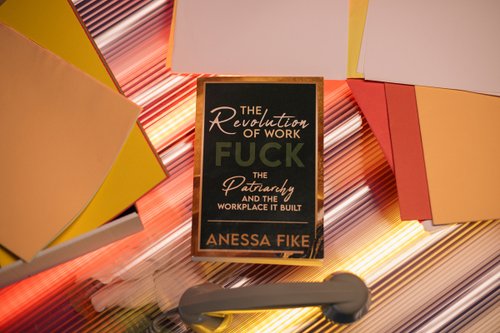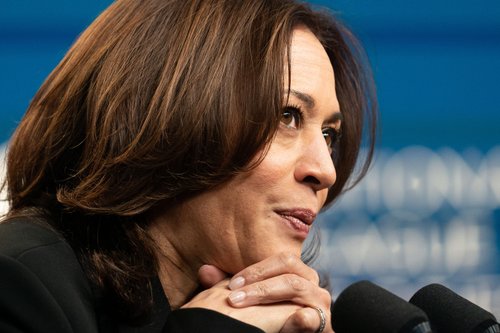These queer work stories need more attention
Jun 27, 2023
7 mins


Journalist and translator based in Paris, France.
To some, it still seems strange that something as deeply personal as sexuality or gender could become a workplace affair. But, aside from the fact that you can’t just leave your identity at the door of your office, LGBTQ+ workers face discrimination in the workplace anytime society considers them second-class citizens. And even as we march towards eradicating this prejudice, queer issues in America will continue to influence — and be influenced by — the world of work.
The long-standing bigotry faced by queer Americans has influenced the labor market. LGBTQ+ people have experienced higher rates of unemployment, job insecurity and waves of mass layoffs throughout the country’s history. In response to this, “queer people often choose jobs very much shaped by their queerness,” explains Sara R. Smith-Silverman, professor of history and social justice studies at American River College. “They might end up choosing a particular kind of job because it’s a job where they know they can feel safe, where maybe they can even be out in the workplace,” says Smith-Silverman, who specializes in gender, sexuality and race in US labor history. As a result, certain industries ended up with a disproportionate amount of LGBTQ+ workers. Smith-Silverman cites many examples of this, including trans women finding safety in the trucking sector and a proliferation of lesbian teachers as it was one of the few acceptable, decently-paid positions for unmarried women. This phenomenon is part of what Smith-Silverman calls queer work, which is anytime queerness becomes central to someone’s job. It could be the congregation of LGBTQ+ workers in certain fields, or a lone queer employee breaking barriers in a heteronormative workplace.
Smith-Silverman and other academics are forming the burgeoning field of queer labor history, which looks at the ways gay rights have been shaped by work — and vice versa. Because when healthcare, family-related benefits and livelihood depend on our jobs, issues like same-sex marriage, trans health and discriminatory pay are heavily contingent on employers. And as these historians have found, queer employees are often intertwined with other communities fighting their companies for more respect, recognition and compensation.
The story of queer labor history is a tale of how discrimination breeds sectoral safe havens, cross-community alliances and organized labor. Here are three pivotal moments that illustrate why:
The Marine Cooks and Stewards Union
At the start of the 20th century, cruise ship employees faced long workdays of physical labor and less than favorable conditions. Hired to serve upper and middle class travelers, these workers were men from marginalized groups of society, namely Blacks, Asians and gays. In this setting, a culture of homosexuality took hold, which went so far as to include drag shows. As one former steward told historian Allan Bérubé, “In the galley … or in the dining room, when there weren’t any passengers around, all the stewards called each other by girls’ names—Miss this and Miss that.”
In 1901, the Marine Cooks and Stewards Union (MCUS) was formed. At its very onset, the MCUS was an exceptional outlier representing queer work. “Queerness [was] pathologized and criminalized, and the labor movement [was] not being supportive of queer rights,” recounts Smith-Silverman. “And then you have this left-led union that is very vocally in support of queer rights, which is a very unusual, early moment in queer labor history.”
When the union first began, racism was strong; only white crew members were allowed to join. But in the 1930s, the union recognized its need for strength in numbers facing its powerful employers, and opened up to racialized employees. They negotiated successfully and eventually joined the Congress of Industrial Organizations (CIO), a left-leaning federation of industrial unions representing many “lesser-skilled” workers. Cruise ship passengers, however, continued to harass staff about their politics, ethnicity and sexuality. In response, the MCSU developed a slogan: “If you let them red-bait, they’ll race-bait, and if you let them race-bait, they’ll queen-bait. That’s why we all have to stick together.” The slogan was crystallized when Luella Lawhorn, a Black woman, was denied the right to work on a passenger liner and every steward on the ship went on strike. As a result, Lawhorn made history as the first Black stewardess on a Pacific-based US passenger ship.
“The industry itself is very interracial, very international. And there was this kind of spirit of humanity, really, that I think marks them,” says Francis Ryan, a labor history professor at Rutgers University. While the union wasn’t actively arguing for same-sex spousal rights or trans healthcare, they were a precursor for the way unions began to view their role in social justice decades later. Unfortunately, the Marine Cooks and Stewards Union was swept to the footnotes of American history as the onset of anti-communist — and anti-queer — hysteria began to take hold…
The Lavender Scare
In 1949, the Marine Cooks and Stewards Union was kicked out of the CIO for suspicions of “Communist leadership.” It was the beginning of the Cold War, when the capitalist US government was in direct competition with communist Russia for global power. Worried the enemy’s ideology could infiltrate the United States, the US government began seeking out communist sympathizers, encouraging citizens to report suspicious neighbors and blacklisting anyone who had perceived ties to the political party.
This period is well known as the Red Scare, but it was accompanied by a lesser-documented witch hunt: the Lavender Scare. US politicians like Senator McCarthy associated communism with queerness, believing both to be signs of moral weakness. These legislators sought to eradicate anyone with either identity from the government and, by 1953, President Dwight D. Eisenhower signed an Executive Order mandating the investigation and expulsion of queer employees from the federal government.
Homosexuality was still widely believed to be psychologically abnormal, a perversion considered similar to communism. “There was this connection that McCarthy very clearly made, that they were fellow travelers,” notes Ryan. “The idea is that you can’t have people like that working for the government where you have state secrets because they can be easily manipulated by the other side.” He points out that other liabilities included alcoholism and gambling, and that to this day he receives calls from FBI recruiters asking about his students’ histories with alcohol and debt to determine if they’re fit for the job. Today, the intelligence agency never asks about his students’ sexuality, “but in the early 1950s, thousands of people were either denied work or kicked out of the federal service because of even the insinuation that they were gay.”
Eisenhower’s order continued into 1980, when NSA employee Jamie Shoemaker was outed by his employer, fought to keep his job, and won. Only in 1998, under President Clinton, was discrimination on the grounds of sexuality outlawed in federal hiring. “It’s about workers rights. It’s a mass firing of workers that does not get taught in schools. People don’t know about it,” Smith-Silverman emphasizes. “And, alongside with the Red Scare, it had a massive chilling effect on the American workplace. Where you feel like you can’t be out politically, and you can’t be out with your sexual orientation or your gender identity.”
Harvey Milk
In 1977, Harvey Milk became one of the first publicly gay elected officials in the USA when he joined the San Francisco Board of Supervisors. Not only was he unusually frank about his sexuality, but he used his position to adamantly fight for LGBTQ+ — and many other — rights. In many ways, Milk personified a vital era in queer history, leaving such an important legacy that the state of California declared May 22nd as Harvey Milk Day. And his biggest political wins centered around the workplace.
A well-known activist years before he was elected, Milk used his position to fight Proposition 6, a ballot measure that sought to eliminate any teachers who were “advocating, soliciting, imposing, encouraging or promoting of private or public homosexual activity directed at, or likely to come to the attention of schoolchildren and/or other employees.” Known as the Briggs Initiative, it aimed to terminate any teacher who even supported gay rights, arguing they failed their “professional duty” to instill good morals. Milk helped lead a loud, proud campaign, imploring then-President Carter to denounce Proposition 6 and publicly debating John Briggs, the proposition’s champion.
When Briggs argued that parents should be able to choose who teaches their children, Milk responded: “At one time, parents didn’t want Blacks to teach. At one time, they didn’t want women to teach. You know, the old Bible says women shouldn’t be teachers.” Known for uniting various oppressed communities into one strong force, Milk incarnated a lightbulb moment of the 1960s and 70s, when different civil rights groups realized the importance of solidarity. Ryan maintains that the Black freedom, women’s and student’s movements all helped shape the battle for LGBTQ+ rights. “A lot of gay activists really took what they were learning in these struggles and applied it to what they were experiencing in terms of discrimination because they were lesbian or gay or transgender.”
Unionizing was one of the most important yokes banding these activists together. “Many unions came on board to publicly oppose a very homophobic proposition for the first time,” explains Smith-Silverman, who considers the Briggs initiative a pivotal moment in queer labor history. “And the only reason they did that was because gay activists waged a massive statewide campaign that involved going door to door — not just in San Francisco and Los Angeles, but going to rural areas and suburbs, saying, ‘This is a big problem.’” The referendum was a close call, but 58.4% of voters sided with Milk and righteous organized labor.
Milk’s work with unions was especially evident during the Coors beer boycott. Throughout the 70s, employees of Coors Brewing Co. fought to end their employer’s union-busting and discriminatory practices, such as refusing to hire Black and LGBTQ+ employees. Milk, working closely with a local unit of the Teamsters union, was instrumental in organizing the boycott. Coors’ beer was publicly poured into sewers and ceased to be served in the city’s queer bars. The boycott spread across the country, and Coors eventually changed their recruitment practices and donated money to some of the communities they’d exploited. And although the Teamsters union wasn’t previously implicated in queer rights, Milk convinced them to also support the opposition of the Briggs initiative and recruit openly queer employees.
Heartbreakingly, Milk was assassinated in 1978, but the fruits of his work remain. He helped push the now-widespread idea that labor battles were not “just about economic rights,” as Ryan puts it. “It’s also about human rights. You know, it’s about that larger struggle to become a full citizen.”
The next generation
Ryan believes studying the past of queer workers has the “potential to really revive labor history.” At a time when unions are gaining popularity, many workers are rejecting the professional status quo and the ACLU is tracking 491 anti-queer bills, studying the successes and failures of queer labor movements could deliver insights to today’s activists.
“Especially for young readers and young students, [it could help] connect personal struggles and ideas about who they are to the larger struggles in the history of the workplace,” Ryan believes. “I would say the queer kids are not alright right now. There’s lots of mental health problems,” remarks Smith-Silverman, who is working on a research project about the lives and educational experiences of queer and trans community college students in California. “People are less afraid of being who they are in the workplace, but they’re still not out in the way we’d hope.”
Photo: Welcome to the Jungle
Follow Welcome to the Jungle on Facebook on LinkedIn and on Instagram and subscribe to our newsletter to get our latest articles every day!

More inspiration: DEI

Sh*t’s broken—Here’s how we fix work for good
Built by and for a narrow few, our workplace systems are in need of a revolution.
Dec 23, 2024

What Kamala Harris’s legacy means for the future of female leadership
The US presidential elections may not have yielded triumph, but can we still count a victory for women in leadership?
Nov 06, 2024

Leadership skills: Showing confidence at work without being labeled as arrogant
While confidence is crucial, women are frequently criticized for it, often being labeled as arrogant when they display assertiveness.
Oct 22, 2024

Pathways to success: Career resources for Indigenous job hunters
Your culture is your strength! Learn how to leverage your identity to stand out in the job market, while also building a career
Oct 14, 2024

Age does matter, at work and in the White House
What we've learned from the 2024 presidential elections about aging at work.
Sep 09, 2024
The newsletter that does the job
Want to keep up with the latest articles? Twice a week you can receive stories, jobs, and tips in your inbox.

Looking for your next job?
Over 200,000 people have found a job with Welcome to the Jungle.
Explore jobs